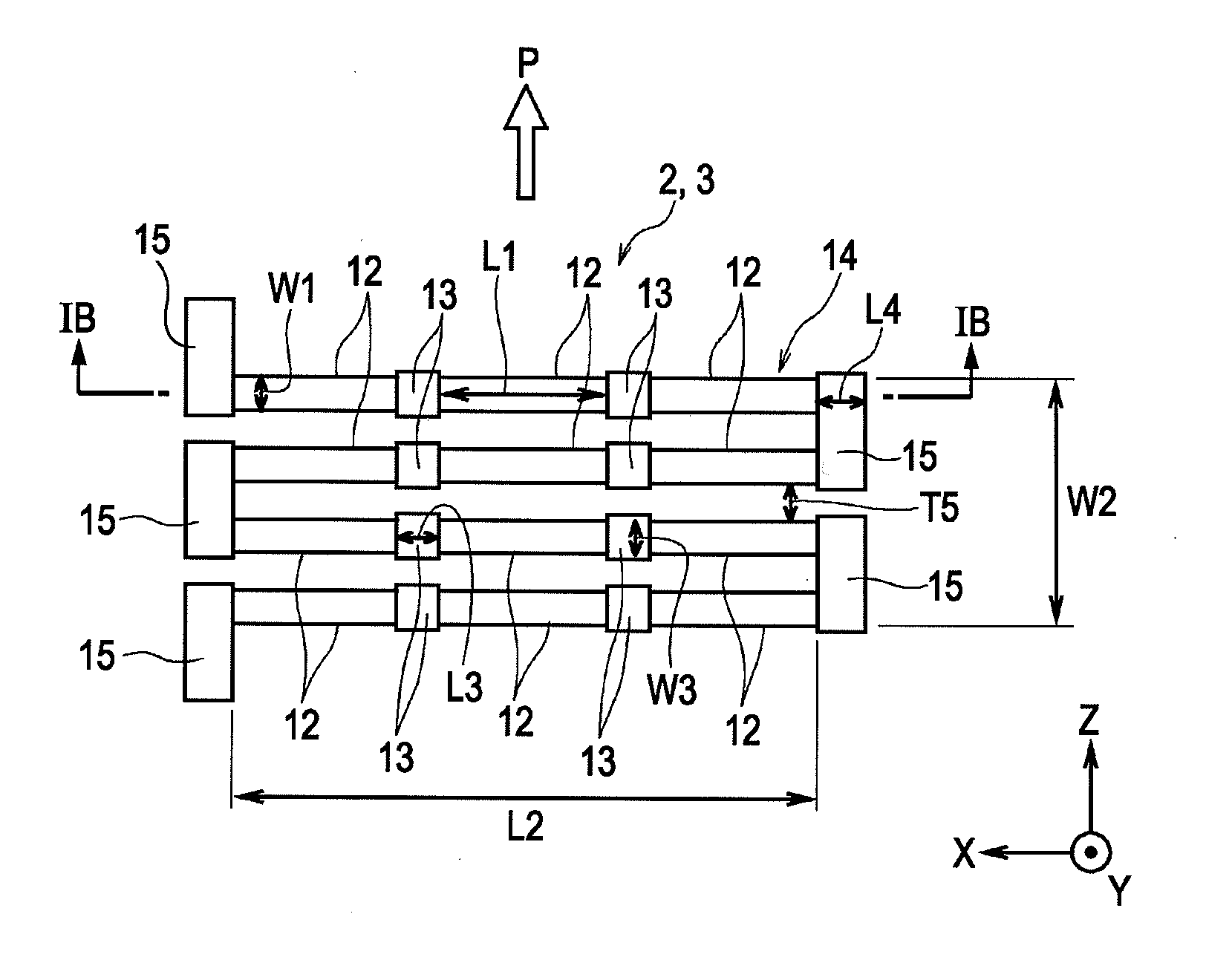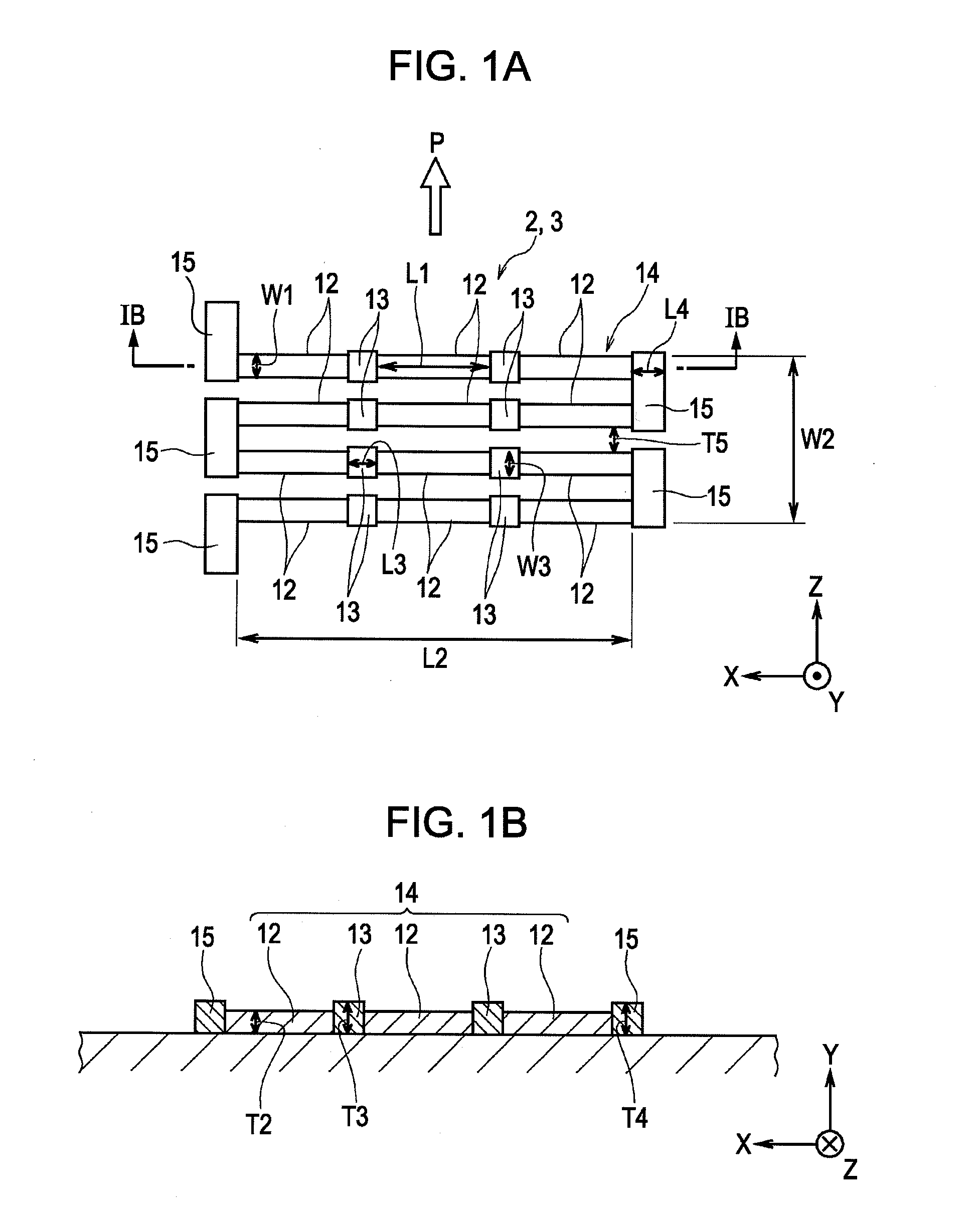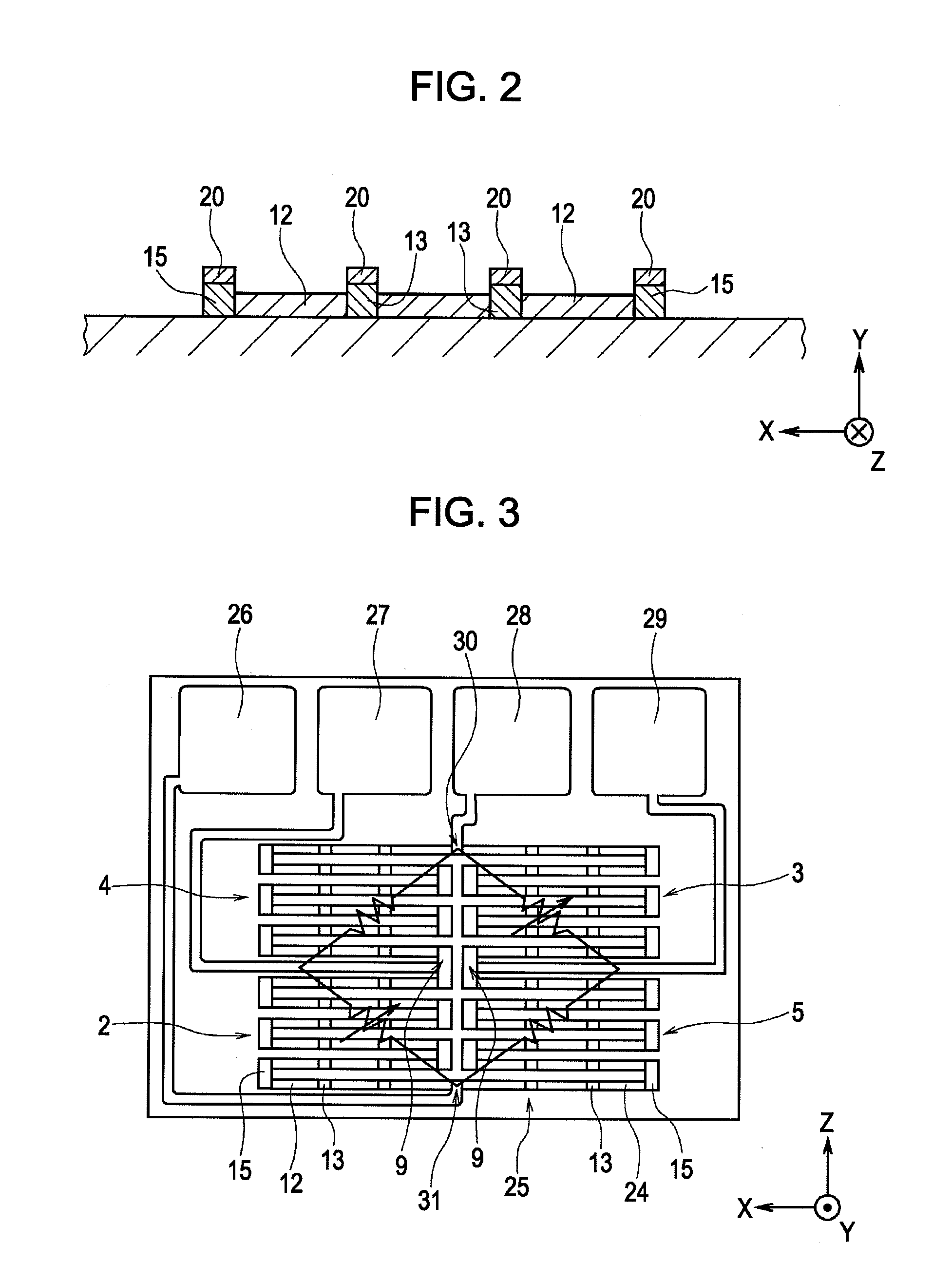Magnetic sensor and magnetic sensor module
a magnetic sensor and module technology, applied in the field of magnetic sensors, can solve the problems of reducing the resistance of the intermediate permanent magnet layer, and achieve the effects of reducing the height of the magnetic sensor module, and efficient arrangemen
- Summary
- Abstract
- Description
- Claims
- Application Information
AI Technical Summary
Benefits of technology
Problems solved by technology
Method used
Image
Examples
example
[0087]The magnetoresistive effect element shown in FIGS. 1A and 1B was formed. Forty-two element units 12 were arranged in connected-element bodies 14, and intermediate permanent magnet layers 13 (CoPt) each having a thickness of 200 Å were disposed between the element units 12. Each of the element units 12 was formed by stacking an antiferromagnetic layer (IrMn, thickness: 60 Å), a fixed magnetic layer (CoFe, thickness: 20 Å), a nonmagnetic layer (Cu, thickness: 21 Å), a free magnetic layer (NiFe, thickness: 30 Å), and a protective layer (Ta, thickness: 30 Å) in that order from the bottom. The element width W1 of the element units 12 was 4 μm and the element length L1 was 16 μm. The width W3 of the intermediate permanent magnet layers 13 was 9 μm and the length L3 was 5 μm. Six of the connected-element bodies 14 were arranged so as to be adjacent to one another in the element-width direction with a space of 2 μm. The ends of the connected-element bodies 14 were connected to each ot...
PUM
 Login to View More
Login to View More Abstract
Description
Claims
Application Information
 Login to View More
Login to View More - R&D
- Intellectual Property
- Life Sciences
- Materials
- Tech Scout
- Unparalleled Data Quality
- Higher Quality Content
- 60% Fewer Hallucinations
Browse by: Latest US Patents, China's latest patents, Technical Efficacy Thesaurus, Application Domain, Technology Topic, Popular Technical Reports.
© 2025 PatSnap. All rights reserved.Legal|Privacy policy|Modern Slavery Act Transparency Statement|Sitemap|About US| Contact US: help@patsnap.com



